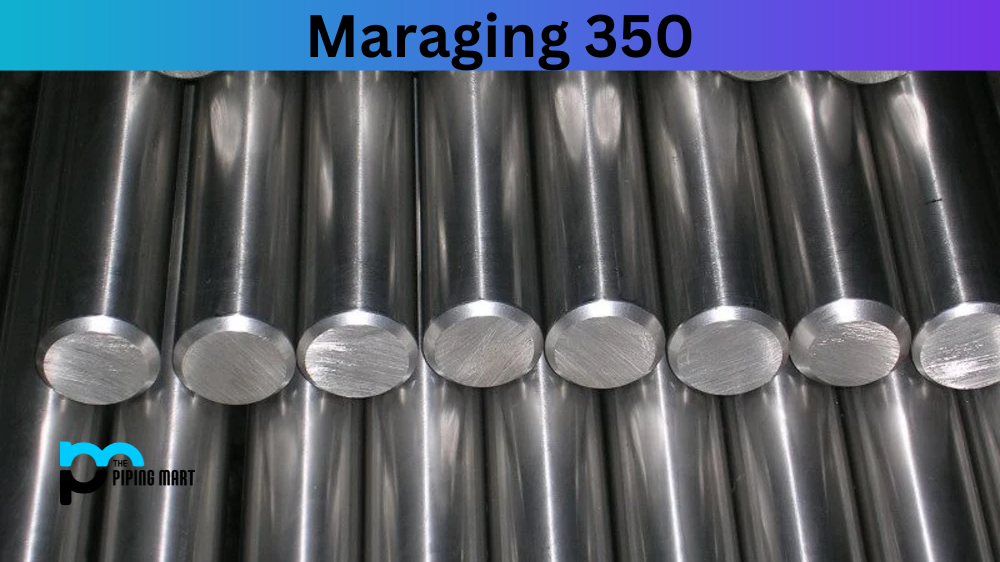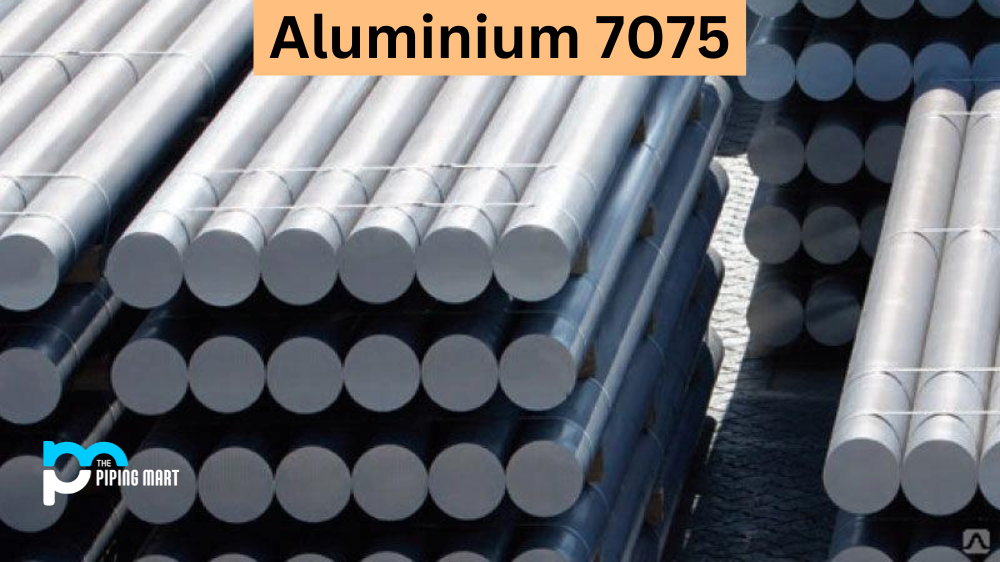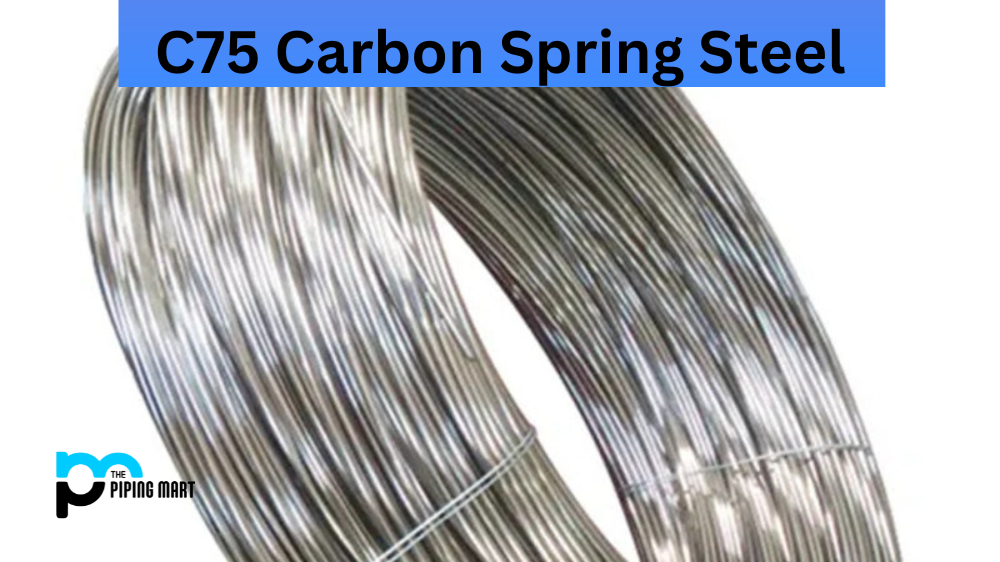This blog post will explore this special steel alloy’s composition, mechanical and physical properties, uses, corrosion resistance, heat treatment, machining, and welding.
What is Maraging 350?
Maraging 350 is a high-strength steel alloy gaining popularity in various industries for its unique properties, including excellent tensile strength, toughness, and corrosion resistance. Initially developed for aerospace applications, the Maraging350 is commonly used in automotive, industrial, and tooling applications.
Maraging 350 Composition
Maraging 350 is a precipitation-hardening (PH) steel alloy containing high amounts of nickel, cobalt, and molybdenum, contributing to its exceptional strength and toughness. It also has small amounts of elements like titanium, aluminium, and manganese, enhancing its corrosion resistance and mechanical properties.
| Element | Content (%) |
|---|---|
| Iron, Fe | 63 |
| Nickel, Ni | Balance |
| Cobalt, Co | 12 |
| Molybdenum, Mo | 4.8 |
| Titanium, Ti | 1.4 |
| Aluminum, Al | 0.1 |
| Manganese, Mn | ≤ 0.10 |
| Silicon, Si | ≤ 0.10 |
| Carbon, C | ≤ 0.030 |
| Sulfur, S | ≤ 0.010 |
| Phosphorous, P | ≤ 0.010 |
| Zirconium, Zr | 0.01 |
| Boron, B | 0.003 |
Maraging 350 Mechanical Properties
When heat-treated, maraging 350 can achieve an ultimate tensile strength of up to 200 ksi (kilopounds per square inch) and yield strength of up to 180 ksi, making it one of the strongest steel alloys available. It also has excellent elongation and toughness, making it ideal for applications requiring high strength and impact resistance, such as aircraft landing gear, missile systems, and tooling applications.
| Properties | Metric | Imperial |
|---|---|---|
| Tensile strength | 1140 MPa | 165000 psi |
| Yield strength (@ strain 0.200%) | 827 MPa | 120000 psi |
| Bulk modulus (typical for steel) | 140 GPa | 20300 ksi |
| Shear modulus (estimated from elastic modulus) | 77 GPa | 11200 ksi |
| Elastic modulus | 200 GPa | 29000 ksi |
| Poisson’s ratio | 0.3 | 0.3 |
| Elongation at break (in gage length 4.5 times the square root of the area) | 18% | 18% |
| Reduction of area | 70% | 70% |
Maraging 350 Physical Properties
Maraging 350 has a density of 8.10 g/cm3 and a melting point of approximately 1410℃. It also has low thermal expansion and excellent thermal conductivity, making it ideal for applications that require good heat transfer, such as aerospace and industrial tooling.
| Properties | Metric | Imperial |
|---|---|---|
| Density | 8.08 g/cc | 0.292 lb/in³ |
Maraging 350 Equivalent
- DIN 1.6355
- DIN 1.6356
Maraging 350 Uses
Maraging 350 is widely used in various industries, including aerospace, automotive, industrial, and tooling applications. In the aerospace industry, it is commonly used for landing gear, engine components, missile systems, and other high-strength structures. The automotive industry uses it for engine valves and other parts requiring high strength and durability. It is also used for industrial toolings, such as dies and moulds, that require excellent wear resistance and toughness.
Maraging 350 Corrosion Resistance
Maraging 350 has excellent corrosion resistance to various environments, including saltwater, sulfuric acid, and other aggressive chemicals. This is due to its high nickel content, which forms a protective oxide layer on its surface. It is an ideal material for marine, chemical, and oil and gas industries where corrosion resistance is critical.
Maraging 350 Heat Treatment
Maraging 350 can be heat-treated to achieve its maximum strength and toughness. The heat treatment process involves solution annealing, followed by ageing at a specific temperature for a specified time. The ageing process allows the alloy to undergo a precipitation-hardening reaction that forms a complex and robust martensite phase.
Maraging 350 Machining
Maraging 350 has poor machinability due to its high hardness and toughness. It requires special machining techniques, such as slow speeds, high feed rates, and low depth of cuts, to avoid excessive tool wear and damage. Carbide or diamond tooling is recommended for machining maraging 350.
Maraging 350 Welding
Maraging 350 can be welded using various welding techniques, including gas tungsten arc welding (GTAW) and gas metal arc welding (GMAW). However, preheating and post-weld heat treatment is required to avoid cracking and maintain its mechanical properties.
Conclusion
Maraging 350 is an excellent steel alloy with exceptional strength, toughness, and corrosion resistance. Its unique properties make it an ideal material for various industries, including aerospace, automotive, industrial, and tooling applications. Maraging 350 can withstand harsh environments and high-stress applications when properly heat-treated and machined. Its exceptional mechanical and physical properties make it a valuable addition to any project requiring high strength and durability.

A passionate metal industry expert and blogger. With over 5 years of experience in the field, Palak brings a wealth of knowledge and insight to her writing. Whether discussing the latest trends in the metal industry or sharing tips, she is dedicated to helping others succeed in the metal industry.




